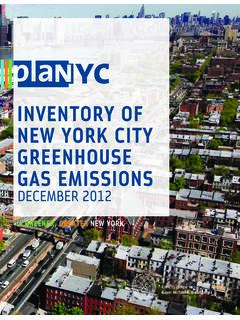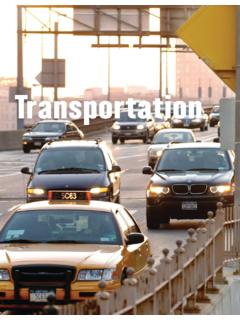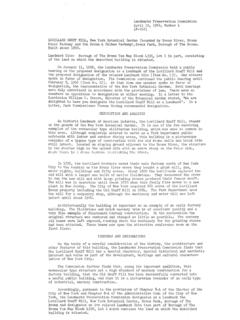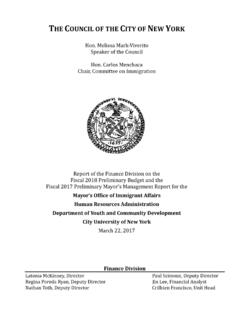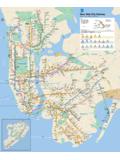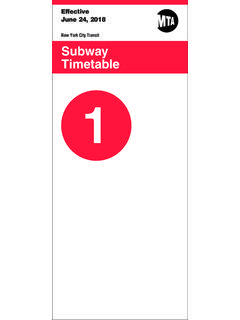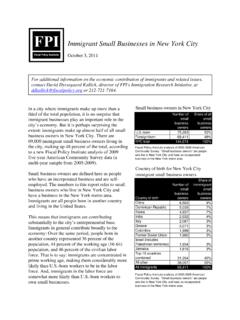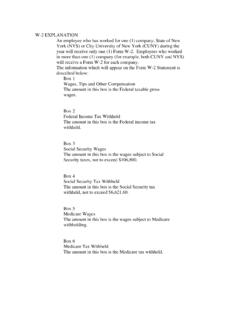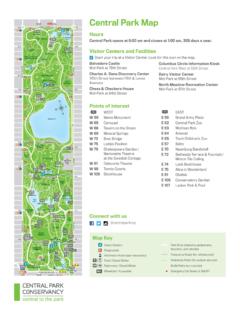Transcription of One Chase Manhattan Plaza - New York City
1 Landmarks Preservation Commission February 10, 2009, Designation List 410, LP-2294 ONE Chase Manhattan Plaza (aka 16-48 Liberty Street, 26-40 Nassau Street, 28-44 Pine Street, 55-77 William Street). Built 1957-64; Skidmore, Owings & Merrill, architect, Gordon Bunshaft, partner in charge of design, Jacques E. Guiton, lead designer. Landmark Site: Borough of Manhattan Tax Map Block 44, Lot 1. On June 24, 2008, the Landmarks Preservation Commission held a hearing on the proposed designation of One Chase Manhattan Plaza and the proposed designation of the related Landmark site (Item No. 12). The hearing had been duly advertised in accordance with provision of law. Seven people testified in support of designation, including the building s owner J. P. Morgan Chase , as well as representatives of city Council member Alan J.
2 Gerson, United States Representative Jerrold Nadler, DoCoMoMo New york Tri-State, the Historic Districts Council, the Modern Architecture Working Group, and the Municipal Art Society. Summary Faced with shimmering panels of natural color and black-enameled aluminum, H-shaped mullions and glass, One Chase Manhattan Plaza is among the largest and most important 20th century skyscrapers in New york The project was designed by Skidmore, Owings & Merrill (hereafter SOM), with J. Walter Severinghaus as partner in charge, Gordon Bunshaft overseeing the development of the design, and Jacques E. Guiton as lead designer. It was one of the leading architectural firms working in the International Style and had been responsible for such pioneering modern works as Lever House (1950-52) and the Fifth Avenue branch of the Manufacturers Hanover Trust Company (1953-54).
3 Chase merged with the Bank of the Manhattan Company in 1955 and the new headquarters was planned to consolidate 8,700 employees under a single roof. David Rockefeller played a leading role in the project; as executive vice president he convinced Chase to remain downtown and hire SOM, resulting in an 813-foot-tall slab-like tower that dramatically altered the skyline and character of the financial district. At that time, few buildings had been constructed downtown since the early 1930s and One Chase Manhattan Plaza signaled a new start for this historic area. Not only did it stand out sharply from its older masonry neighbors, but the planning of the site, incorporating an irregularly shaped 2 acre Plaza , established a welcome break from the narrow, twisting streets that characterize much of the neighborhood.
4 Construction started in 1957 and the tower was mostly complete by 1961. The south Plaza and basement levels were dedicated in 1964, incorporating a Sunken Garden by the sculptor Isamu Noguchi. Resting 16 feet below the Plaza , this serene work of art is visible from above and through curved glass windows that separate it from the bank s main branch located on the concourse level. Architecture critic Ada Louise Huxtable praised the design in the New york Times: These are ambitious structures of character and quality, surrounded by the most expensive urban luxury money can buy space. In a remarkable duality of purpose, reconcilable only in this commercial age, they aspire to the dual role of company trademark and work of art. The structure was also described in Architectural Forum as a milestone, perhaps even an end point in the development of the American skyscraper.
5 2 As hoped, One Chase Manhattan Plaza did lay significant groundwork for a downtown renaissance in the 1960s, leading to construction of a succession of corporate towers immediately west, from the Marine Midland Bank Building in 1967, to the World Financial Center complex in 1985-88. 2 DESCRIPTION AND ANALYSIS Few buildings have had as significant an impact on the character of lower Manhattan as One Chase Manhattan Plaza . Completed in 1964, it was one of the financial district s first buildings to boldly reflect the aesthetic and planning strategies of 20th century European modernism, often called the International Style. Rising at the north end of a 2 acre Plaza , the 813-foot-tall tower symbolized the bank s long-standing commitment to the area, leading to the eventual creation of the World Trade Center (1962-73) and the World Financial Center (mid-1980s).
6 Chase Manhattan Bank and David Rockefeller Chase National Bank merged with the Bank of the Manhattan Company in April 1955, making it the second largest financial institution in the nation, with $8 billion in assets and 87 domestic branches. Both shared strong ties to lower Manhattan and had been founded a short distance from the site. The Bank of Manhattan , for instance, first served depositors in 1799 where 40 Wall Street stands today and Chase was founded at 104 Broadway, near Cedar Street, by banker and publisher John Thompson in 1877. Named for Salmon P. Chase , secretary of the U. S. Treasury under President Abraham Lincoln, it grew to become the largest bank in the world by 1930. In the late 1940s, however, National city Bank and the Bank of America National Trust and Savings (later Citibank and Bank of America) surpassed Chase and the New york Times commented that following such success it was not easy for the bank to take a back seat, much less than stay in it.
7 3 Six months following the merger, in November 1955, Chase Manhattan Bank announced plans to erect a new headquarters. John J. McCloy was the bank s president (1953-55), and later, chairman (1956-60). Trained as a lawyer, he had been assistant secretary of war under President Franklin Delano Roosevelt and headed the World Bank from 1947 to 1949. To supervise the project, in January 1955 he promoted David Rockefeller (b. 1915) to executive vice president for planning and development. Rockefeller had first joined the bank as a manager in 1946. His parents, John D. Rockefeller, Jr. and Abby Aldrich Rockefeller, were major philanthropists, having played leading roles in the creation of many familiar New york city structures, such as Riverside Church, Rockefeller Center, and the Museum of Modern Art. David Rockefeller remained associated with Chase for most of his career, becoming its president in 1960, and chairman of the board and chief executive officer in 1969.
8 He received a gold medal from the Downtown Association in 1956 for his role in planning the new headquarters and also helped found the Downtown-Lower Manhattan Association in Under his leadership, this organization helped plan the South Street Seaport, the World Trade Center, and Battery Park city . According to Rockefeller, it was he who convinced McCloy to hire a qualified outside firm, Ebasco Services Incorporated, to evaluate the bank s real estate This consultant prepared several surveys and reports in 1954 and 1955, concluding that a long-term solution was needed one that would consolidate various banking operations in a single structure. Chase owned seven buildings in the vicinity and Ebasco determined most of these facilities to be substandard. Though the 1954 report did not take a position on where a new headquarters should be erected, it noted the operational advantages of remaining downtown, as well as the current value of the bank s property.
9 A subsequent report evaluated two sites: the Broad Street block (bounded by Broad, Wall and William Streets and Exchange Place), as well as the block that Chase would ultimately purchase. Rockefeller worked closely with William Zeckendorf (1905-1976), a long-time family advisor, to find an ideal location. A prominent real estate developer and broker, he assembled the site of the United Nations and sold it to the United Nations Organizing Committee which received an $ million gift from John D. Rockefeller for this purchase. He also built such ambitious commercial and residential complexes as Roosevelt Field on Long Island, Mile High Center in Denver, and Kips Bay Plaza in Manhattan . Though Chase contemplated the purchase of various sites, both downtown and elsewhere, it was the pending sale of the block directly north of the bank s Pine Street headquarters, bounded by Cedar, Nassau, Liberty, and William Streets, that helped finalize their decision.
10 The 60,000 square foot site had been occupied by a Romanesque Revival style structure (Charles W. Clinton, begun 1882) and six other buildings erected by the Mutual Life Insurance Company of New york . Vacant since 1950 when the firm 3moved to Broadway and 55th Street, the block was currently owned by the Guaranty Trust Company of New At a hastily-convened meeting with Chase executives at the bank s headquarters in February 1955, Zeckendorf recounted saying: There is only one logical musical chair open and available to you I pointed out the window .. The Mutual Life site is under negotiation for sale and you have no time. You must bid for it As one of the largest sites available in the area, the bank acted without delay, paying $ million. Chase continued to claim there were no definite plans for a new head office but decisive action had been taken and a contract was signed in May 1955 to begin demolition of the entire north Skidmore, Owings & Merrill SOM was selected to design Chase Manhattan Plaza in spring 1955.

